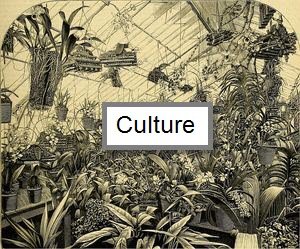When Repotting, Consider the Benefits of Dividing Orchids
MOST OF TODAY’S ORCHID growers do not remember the days before orchid mericlones were available. It was in the 1960s that it was discovered that the growing tip, or apical meristem, of an orchid could be excised and treated in a way that its cells would develop into many identical or nearly identical plantlets. Prior to that, divisions were the only way superior orchids could be shared among enthusiasts. Imagine how coveted the really great plants could have been among orchid breeders and exhibitors and appreciate how priceless they may have seemed when it took years to produce just a few flowering size divisions from one wonderful plant.
Today’s hobby growers are as likely as not to discard divisions and backbulbs at repotting time, yet it is a useful propagating technique. This is particularly true for species orchids that are not mericlones and for hybrid seedlings that are unique. Those, in particular, are plants that ought to be divided and shared, providing they are of good quality and free of disease.
Sometimes it is difficult to ascertain if a particular orchid is a mericlone, but when properly labeled, a word or words enclosed in single quotation marks at the end of the plant name will confirm clonal status. The absence of a clonal name does not guarantee that the plant is genetically unique. Indeed, orchids available for sometimes amazingly low prices at grocery stores and big box retailers are as likely as not to be labeled “phalaenopsis orchid” or “dendrobium orchid” if they carry any label at all. While these may make pretty and long lasting potted plants, they are not the orchids that any serious grower should be propagating to share with friends and collectors.
When one thinks of dividing an orchid, we are generally referring to those with a sympodial growth habit, which are the majority. Those are the orchids that produce their new growths or leads from the previous one, often along a creeping stem. The cattleyas and their relatives provide an excellent example.
As seedlings or young plants, they will generally produce but one new growth each year. Each successive growth tends to be larger than the last until the plant reaches flowering size. Once mature, such orchids, when well grown, will often produce more than one lead each year. This can result in multiple inflorescences at flowering, and in time, a showy specimen plant. Some orchids, however, are more disposed to this than others.
When the time comes to repot a larger plant with multiple leads, the grower must decide whether to move the entire plant to a yet larger pot or whether it is time to divide it into smaller plants. Each pseudobulb with its basal part has the potential to become an individual plant if it is able to produce new roots and a new lead from its base. Plants produced from single pseudobulbs usually produce weak new growths that tend to look like those of young seedlings. It may take several years for those plants to reach flowering size again. Much better success results from divisions consisting of several connected pseudobulbs, at least three or four if possible.
This is easy to achieve if the orchid is one that readily produces new leads. Remove the plant from its container and carefully clean away old potting medium and dead roots. When cutting any part of an orchid plant, always use a sterilized blade to prevent the spread of virus. If you have the time and inclination, this is sometimes easier to achieve on large, old plants if you first soak the pot and medium for a short period in a small tub or bucket of water.
After the plant is as clean as possible, make a clean cut on the stem between pseudobulbs, being careful to include several leads for each new plant. Disposable single edged razor blades are ideal for this purpose. Do not be concerned if some of the older leads seem to lack viable roots. They can still help sustain and nourish the new plant.
Pot each division in a container suitable for its size. It is well to use a pot clip to hold the plant firmly in place until its roots extend and anchor it in its new home. Be sure to label each division.
Some orchids do not tend to produce multiple leads. Even so, these can be divided into two plants when at least seven or eight growths are present. Again, make sure each division includes at least three or four pseudobulbs. The division without the newest growth is referred to as the “backbulb” and should produce a new lead from a latent bud at the base of a growth. Backbulb divisions are typically not as vigorous as the lead division and may take a couple of years to reach flowering size again.
If you have an orchid that stubbornly remains a one lead plant, you might try the trick of partially severing the stem or rhizome between leads to encourage a latent bud to break. This should be done at least three or four pseudobulbs behind the lead. Cutting about halfway through the stem should be sufficient. In this way you might encourage a plant to branch that would not otherwise produce multiple leads. It will also be better suited for division when the time comes. However, plants in this condition are not eligible for cultural awards.
The best time for dividing an orchid is, of course, at repotting time when new roots are forming, or are due to emerge. This helps ensure that each division will prosper. Next time you are repotting and are ready to toss away otherwise healthy backbulbs or divisions, consider repotting them as well to share with fellow hobbyists or to donate to your orchid society’s divisions table.
